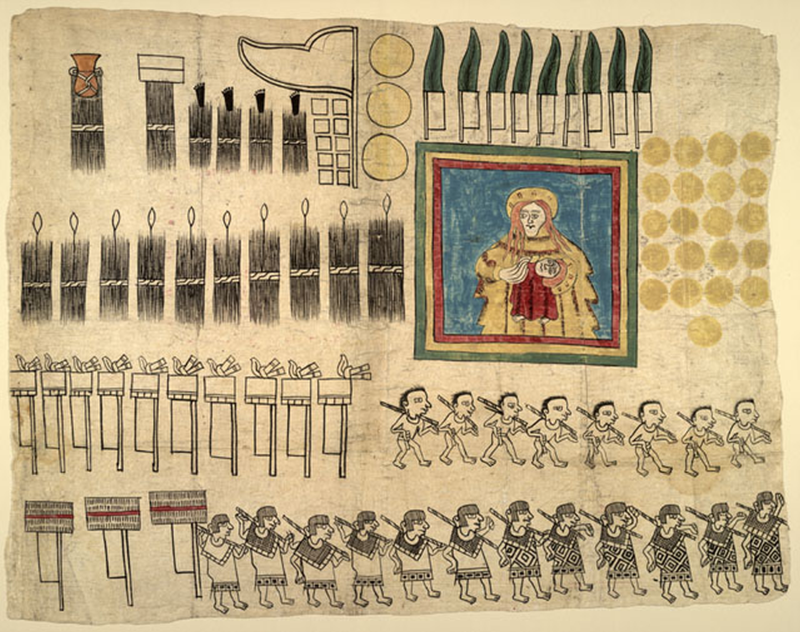Chapter 18 - Von Sivers Image Analysis

Earliest Representation of the Madonna and Child Created by Indians in the New World (1531)
This image is one of eight Indian paintings form the 1531 Huejotzingo Codex, part of the documentation in a lawsuit brought by the conqueror of Mexico, Hernán Cortés, against members of the first audiencia or high court in Mexico, which earlier had tried to take over Cortés's land and power. The eight paintings in the codex illustrate the testimony of Indians called as witnesses in the case. This painting illustrates the contributions of the Huejotzingo people to Cortés's conquest of Mexico.
The Huejotzingo had become allies of Cortés ten years earlier in order to defeat their mutual enemies the Aztecs. Afterward, Cortés brought the Huejotzingo under his protection as part of his encomienda. In 1530, while he was out of the country, Nuño de Guzmán, the Spanish official who took over Cortés's estate while he was away, began to demand high tributes from Huejotzingo to support his wars of conquest in the area. When Cortés returned, he sued the courts for demanding too much in tribute and won the first legal battle of the Spanish New World. The image, submitted as evidence to the court, shows the tribute items demanded by Guzmán, including feathers, cloth, arrows, liquid amber and sandals. On the lower border are eight men and twelve women representing the native slaves sold to pay for the military campaigns and for the gold and feathers used to make the golden standard of the Madonna and Child that Guzmán demanded for his army. Thus, this first image of the Madonna and Child in the New World has less to do with heavenly matters and more to do with the worldly affairs of men.
Source: Courtesy of the Library of Congress